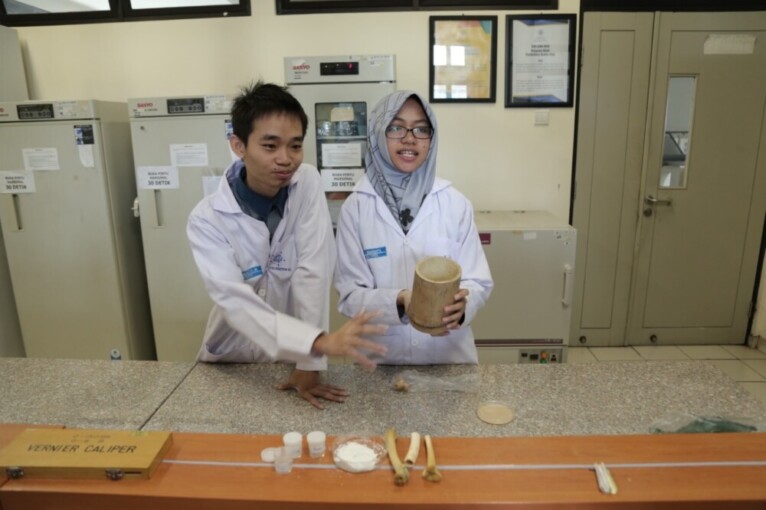
Universitas Gadjah Mada (UGM) students have turned goat bones into artificial material (bone graft) to repair human broken bones. Bone graft is very much required in bone surgery to fill broken bones.
“Up to this day, bone grafting material is still imported which is relatively expensive. So, we did the research to develop bone grafts domestically,” said chairman of goat bone graft team, Valentino Alberto Muktiwibowo, on Thursday (10/10) in a press conference at Integrated Research Lab of Faculty of Dentistry UGM.
Valentino said the need of bone materials in Indonesia is very high, not just for patients of broken bones but also dental damage.
“There are 24 million of broken bone cases in Indonesia every year, not to mention dental damage and malignancy which is as high as 70 percent,” he said.
On the other hand, research tissue banks in the country are still a few with only three operating in Jakarta, Batam, and Padang.
Along with fellow students Alfin Lanagusti and Pradnya Paramitha Dewandani, they conducted the research into bone graft under the guidance of Dr. drg. Archadian Nuryanti, M. Kes., in a Student Creativity Programme. The project has earned a gold medal during the National Student Scientific Week (PIMNAS) 2019 recently.
He said they had chosen the goat bone due to its large availability. The goat bone also has micro structures similar to that of human beings. The calcium in the goat bone is processed to make a complex with phosphor in the form of apatite that is easy to absorb by the body until as high as 60-70 percent. This way the goat bone can be the candidate of natural resource of hydroxyapatite that is cheap but potential.
The bone graft named as Conchaplast is made from three main materials, goat bone, bamboo salt, and cow blood. It has been tested in vivo. The material is implanted to the bones of Cavia cobaya mice. The result showed significant changes in the amount that has roles in bone tissue formation.
“The addition of this bone graft showed an increased amount of osteoblast cells and collagen significantly as marked by ALP (alkaline phosphatase) marker and minimal immune rejection by looking at the amount of eosinophils and IgE levels,” Alfin added.
The research can help the patient that needs synthetic bone grafting for dents or bones. Going forward, further testing is still needed to be done on this bone graft. The utilisation of goat bone waste is expected to resolve environmental problems arising from the waste presence. “The goat bone can be a cheap alternative to the bone graft by utilising abundant potential of goat bone in Indonesia,” he concluded.

